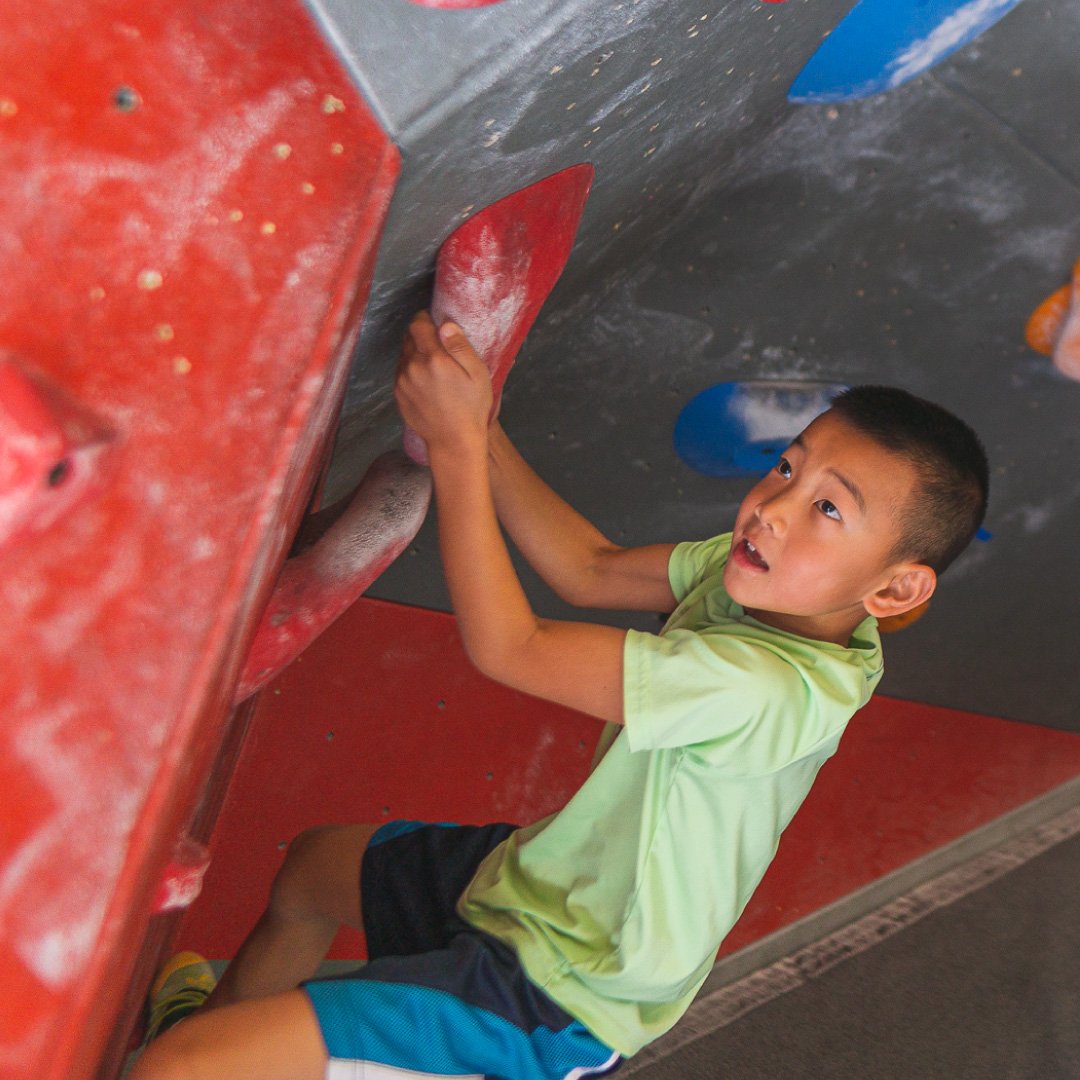How to Motivate your Children to Develop a Love for Climbing
Walking into a bustling climbing gym can be an overwhelming and exciting experience for anyone. So, how can you keep your kids on track in such an environment? Below, I’ll outline the Youth Programs philosophy at The Spot and give you some tips and tricks to help your child develop a long-lasting love of climbing!
The 5 C’s
Here at The Spot, we believe a good climbing experience for children has goals that promote positive youth development, identified in literature as the 5 C’s: Competence, Confidence, Connectedness, Character, and Compassion.
Competence: Building competence in youth climbers includes enhancing their cognitive and physical competencies. Youth gain cognitive capacities such as increased communication skills, increased focus, and problem-solving. Physical competency includes both an overall increase in fitness levels of youth by improving strength, endurance, flexibility, and cardiovascular fitness as well as skill-based abilities such as belaying, technique, general climbing knowledge/terminology, etc.
Confidence: Youth build confidence while participating in climbing programs by recognizing their capabilities, developing greater levels of physical fitness, and building trust with other climbers. By improving general climbing skills/competency and developing trust in themselves and others translates to all other areas of their lives.
Connectedness: Connections in climbing is an important aspect of the sport and one that youth programs have an ability to foster early. Climbing programs strengthen youth relationships with their peers and adults. Relationship-building happens during practice and in competition. During practice, youth build camaraderie with peers through shared experiences. Adults, such as coaches and gym patrons, encourage youth, which builds trust and rapport. This models a safe environment for relationships that youth may build outside of climbing
Character: Climbing is inherently uncomfortable and can push youth outside their comfort zones- an important developmental area for personal growth. Participants must demonstrate patience and perseverance, developing greater self-control in the process.
Compassion: One thing that no one will deny is that climbing is difficult, and support from peers and partners is paramount for a successful climbing session. Emphasis on support of peers must be emphasized by the coaches to help students develop greater empathy and responsiveness to others.
Setting Goals
Group-based climbing programs have a unique ability to help students develop both mental and physical resilience, a quality that prepares them to navigate the complexities of life. Each of these goals needs to be tailored to age-appropriate activities to be impactful for the students and are just as important as physical climbing skills and abilities. Coaches (and parents) should focus on having fun as well as climbing skills. Climbing technical skills that should be developed over time are as follows:
Learn how to put on a harness and tie in properly
Hold indication (crimps, slopers, jugs, etc.)
Introduction to belay technique
Targeted movements and technique
Route Reading
Understanding of center of balance, footwork and hip placement
Climbing vocabulary and etiquette
Using games to build skills
These skills must be nuanced and age-appropriate games are a great way to do this! Climbing should be fun, especially if the goal is to instill a life-long love for the sport. Below are a few games to play with your climbers at various age ranges:
Ages 2.5 - 5
Stuffed animal rescue: Place a small stuffy on low hold on a climbing wall. Encourage your child to ‘rescue’ their stuffy with the engagement of a story of how they got there! Have your child name their stuffy, and continue to gradually place the stuffy on higher holds each time they are successfully ‘rescued.’
Ages 6+
Shakeout Street: As your child progresses up the route, shout “shakeout” at progressively more difficult sequences/sections of the climb. The climber must stop and shake both hands as well as shake both feet before continuing up the route. Similarly, you can yell ‘Freeze’, and the climber must stop where they are until you tell them to climb again.
Ages 8+
Take-Away: Find a climb on the bouldering wall that is very easy for everyone. The first climber does the problem without using one of the holds and then that hold is gone for the rest of the game. You can mark the wall (not the hold) with chalk or tape to indicate which holds are still in. The next climber will then try to take away another hold, until there are only a few holds remaining. Start and finish holds must remain and can’t be taken away.
As a parent, support for your child’s interest in climbing will go a long way. Kids maintain a better relationship with sports as a whole when parents give positive support and encouragement. Whether your child is in a climbing program or is climbing casually with you, keep the focus on fun - the way climbing should be!


